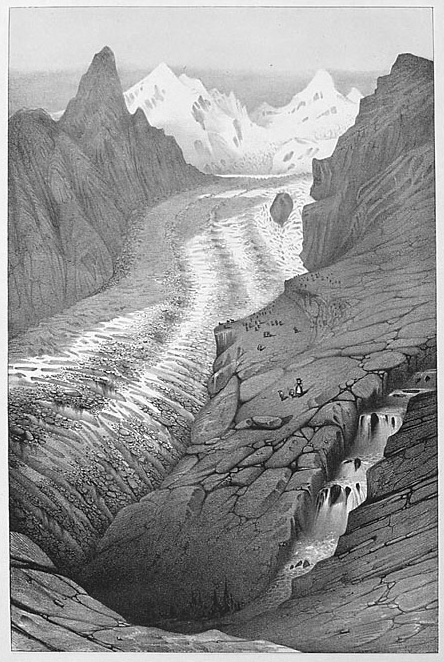 | Debating Glacial Theory, 1800-1870 – Overview & Set-Up |
| Home || Debate Profile || Self-Guided Study | |
"If this [glacial] theory be correct, and the facility with which it explains so many phenomena which have hitherto been deemed inexplicable, induces me to believe that it is; then it must follow that there has been . . . a fall of temperature far below that which prevails in our days” (Louis Agassiz, 1837, p.377). In the 1840s geologists faced the possibility that the Earth was once very cold, with Europe covered in glaciers. Evidence supported both accepting and rejecting this idea. This case study allows you ro address the evidence of the time and decide for yourself. In the process, you should learn a bit about Earth's history, how scientists interpret evidence, and also how science is shaped by personality, cultural context and lively debate. To experience the life of a 19th-century geologist well, you need to travel and visit significant sites around Europe. Here you will do this using Google Earth ( the "Tour") -- see below for set-up. You will also read about how those observations were interpreted through original publications from the 1800s (the "Episodes"). This background will allow you to address the provocative theory first presented by Louis Agassiz and William Buckland at the Geological Society of London in 1840: that thick ice sheets once covered the land! Two tracks are available:
SET-UP for Touring:
1. Install GoogleEarth on your computer. 2. You may also download the program-data file that contains the tour and save it on your computer for future use. You will be able to open and run this file on your own. (Elsewise, you will need to be online to use the appropriate links in this website.) 3. When using Google Earth:

With set-up completed,
|
|



